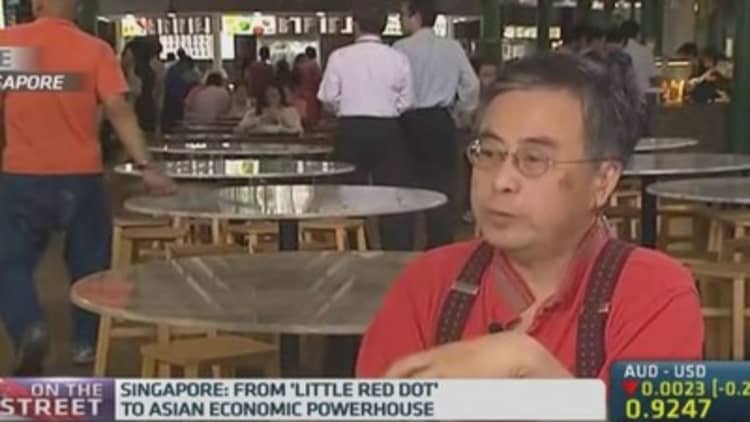Singapore's reputation as a shopping haven could be at stake as rising prices and growing regional competition threaten to erode the city-state's allure as one of Asia's best retail destinations.
Latest figures from the Singapore Tourism Board showed tourists' expenditure on shopping falling 6 percent on-year during the first three months of 2014 to S$1.1 billion ($900 million). This pales in comparison to the entertainment and gaming sector, which surged 19 percent and raked in S$1.6 billion.
Read MoreIs Singapore's incomeinequality gap narrowing?
As Singapore's retail industry relies heavily on its tourism sector, a 14 percent annual decline in the number of Chinese visitors over the first quarter of 2014 may have contributed to the slump in spending. Mainland shoppers are the biggest spenders among tourists in the Southeast Asian city.
"Singapore is part of a group holiday itinerary for the Chinese, together with Malaysia and Thailand. The MH370 tragedy, along with the March protests in Bangkok, took the winds out of the sales for many retailers," said Alan Cheong, senior director of Research & Consultancy at Savills Singapore.

Singapore getting too costly?
One of the industry's weakest links is its pricing power, which, according to analysts, lacks competitiveness in the region.
"Rising rental, labor and transportation costs add up to the higher cost for products and that makes shopping in Singapore less attractive for tourists," Savills' Cheong told CNBC.
A stronger currency, which hit a nine-month high of 1.2359 against the U.S. dollar last month, is also to blame.
Read MoreWhythe Singapore dollar rally may sputter out
30-year-old Lu Xi from Guangzhou has lamented about how unfavorable exchange rates has forced up the cost of her trip. The , which has benefitted from safe-haven inflows, is up 3 percent against the Chinese yuan in the past year.
"As this is not my first trip, I had a budget in mind but when we arrived, we realized things have become more costly. Last year, I bought a Charles and Keith handbag for S$70 (about $56); now it's nearly S$20 (about $16) more," Lu said.
Singapore no longer unique?
Apart from rising prices, the increasing popularity of e-commerce, as well as the preference by some brands to set up shop elsewhere in Asia, has significantly reduced the need for people to travel to Singapore to shop.
Read MoreKate Middleton put this Singapore retailer on the map
"Due to [Singapore's] small market size, many popular brands are not keen to bring their brands here. They'd rather bring it to bigger markets like China," said Dr Michael Chiam, senior lecturer at Ngee Ann Polytechnic's Tourism and Resort Management.
"I think we can re-invent ourselves by attracting different brands to Singapore - new brands that locals or people in this region are not exposed to," he added.
But Dr Jannie Chan, president of Singapore Retailers Association, thinks the addition of new labels isn't a long-term solution.
Singapore tourism steps up guard against haze return
"[This will] only bring short-term benefits as brands move fast and are adopted by other destinations very quickly," she wrote in an email to CNBC.
Still, she believes the city-state has an edge. "[Other destinations] do not have many of Singapore's key attributes, such as Orchard Road [which is] one the worlds few truly iconic shopping streets. Plus Singapore has a safe reputation and public transport," she noted.
There are also tourists who still prefer to shop in Singapore.
Read MoreSingapore zoo CEO takes a leap into the wild
"I can buy things from different brands all over the world here. Apart from fashion trends, the structural design of the malls in Singapore is mesmerizing," 22-year-old graphic designer Melody Baustita from the Philippines said.
For Indonesian native Indra Fajriansyah, the extra service provided by retailers is what differentiates Singapore. "It's a better place to shop for branded good because the stores here give maintenance services (that involve the conditioning of leather bags) [which] I don't mind paying more for," he said.
For the first quarter of 2014, Singapore received 3.9 million international visitors, according to government statistics.

